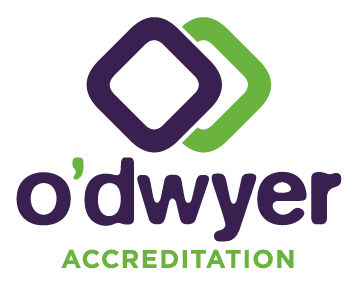and get out of the compliance paperwork swamp
Some lab and quality managers enjoy corresponding with NATA and arguing the point with them, but most of us don’t. If you have inadvertently been caught up in three, four or even more rounds of correspondence with NATA after an assessment, you’ll probably feel like you are buried in correspondence with them. Or are going around in circles. Or talking at cross-purposes.
It can be frustrating and time-consuming, and you may even start to wonder if the NATA staff were actually at the same assessment as you were!
Relax. Help is available.
1. Be a good host
Before the assessment, make sure everyone knows who is on the assessment team: who the technical assessor is, who are the NATA staff members and what the difference is. If you don’t know much about the technical assessor you can google them to find out a bit more about their background. This gives you an opportunity to establish a rapport right from the start and have good open lines of communication. This is a small task that can make things run a lot smoother.
2. Stick like glue
Do not leave any assessor or NATA staff member alone to interview junior staff members. Try to avoid them going through your records, methods or QAP / Proficiency testing results without a tour guide. This practice leads to many ill-founded non-conformances in assessment reports. So just keep popping in, or even better, ensure that the senior scientists are available so the assessor can go through the information with someone who can explain it to them.
3. Practice active listening
Ask for details for every non-conformance mentioned. Ask those clarifying and reflective questions you learned in your internal auditor course. You need enough detail to be able to go back and find what the assessor saw or you will not be able to identify the root cause and fix it.
If you do not immediately understand what the issue is about, ask the relevant assessor. If it is a technical issue, direct your questions to the technical assessor. They are far more likely to identify issues of real concern & you will want to know exactly what the technical assessor has found. Technical issues can be lost in translation when the NATA staff member is putting them into the report, so no matter what ends up in writing, make sure you know what the technical assessor thinks.
4. The exit discussion belongs to you
The exit discussion is when you get to clarify details and correct the record if they have got the wrong end of the stick. Make sure your key personnel are able to get there, especially senior management. This is your chance for the big boss to hear how well your lab is going.
Some NATA staff will allow a copy of their report to be printed before the exit discussion, but that’s rare. So, ask the NATA lead auditor if they would project their report onto the meeting room screen.
This will help the senior scientists or quality manager to follow what is being said, check it for accuracy and correct misunderstandings.
This is one of the most important parts of the assessment so don’t let the NATA team short-change you on it! Everyone should be on the same page before the assessment team leaves.
5. Explain to your management team the approach you’re taking
Keep your correspondence with NATA as minimal as possible (you’ll be doing NATA a favour too) so that your organisation will have more time to work on high-priority issues, no matter how the assessment team has coded them. So, ask your team not to address ‘world peace’ in their replies. Just what’s in the report.
6. Be economical with your response
This is super important. Do not reply to observations (Os) or recommendations. If you really want to, you can thank the NATA team for their helpful suggestions. But don’t waste your emotional energy at this time on things that may be wrong or wide of the mark. More on how to investigate and respond to NATA conditions.
Now to the major (Cs) and minor findings (Ms): Log them all into your corrective action system. I find this process helps to place some distance between the emotion of the assessment day and the issues laid out in the assessment report.
7. Don’t let emotions or body language affect you
This is super important too. Remember all that stuff about non-verbal communication? It is at play in a big way during an assessment. However, the non-verbal messages you receive during the assessment have no role to play in the follow-up. When you’re putting together your response to NATA pretend that you weren’t at the assessment. Read what the Cs and Ms actually say and respond only to those issues.
If the report doesn’t seem to reflect what you discussed on the day don’t argue! It’s more efficient to just reply to what is in the assessment report and then you can deal with the ‘real’ issue in your own time. If you have to send in evidence that the assessor could have seen if they had asked for it, just roll with it. The aim of the game is get NATA to tick off each of the non-conformances that they have identified with as little discussion as possible.
8. Let it mature
Put together your response with evidence for the Cs (don’t forget that you only have to tell them what you plan to do for the Ms) and put it away for a day or so before you send it in.
Oh, and advise NATA if you will be sending it in late. It’s better to let them know that you will send it in a few weeks late than to send your responses in dribs and drabs. Send in a complete response unless it is absolutely unavoidable. NATA may be more inclined to whip through and tick everything off and it’s easier to keep your assessment records in order. Keeping assessment correspondence in order is critically important if there are a lot of issues to respond.
9. Get on the phone
If you get a response from NATA asking further questions, get straight on the phone and make sure you understand what they are asking for. Remember, though, they should not ask you for specific actions in response to non-conformances – they should let you decide how you will meet the requirements.
10. And now go back to the observations
OK, this is not really a step to avoid paper warfare; however, it is related as it is a serious risk management step, so listen up!
You thought I said to ignore the observations? Well, no. I said not to get into a discussion with NATA about them. Once you have calmed the NATA beast, you must go back to the Os and review all of them, on the ground in the relevant labs, with the right managers, to find out if there is something behind them. Some observations are there because the assessment team has sniffed out something unhealthy, but they can’t quite put their finger on it. I have seen a number of observations declared a can of worms after the right manager had looked into it.
Log the ones that turn out to be on the nose into your non-conformance system. Yes, my poor labs have at times ended up with more non-conformances logged than the number of Cs and Ms in the assessment report.
One final thought on assessments
After an assessment, you need to get the follow-up over and done with as quickly as possible so you can turn your attention to more significant issues. It’s not that NATA is not significant, but many of the issues they find are compliance issues with no immediate impact on your output or business security. In the normal run of business, they would be prioritised much further down the list. So, bearing this in mind, you can minimise the amount of time spent dealing with these issues, whilst still managing the risk of having a poor NATA assessment in the future.
If you need assistance from someone who is an expert in laboratory quality, knows the NATA ropes and can act as an objective person in your corner, give us all the details through our enquiry form or book a call with Cathy.




